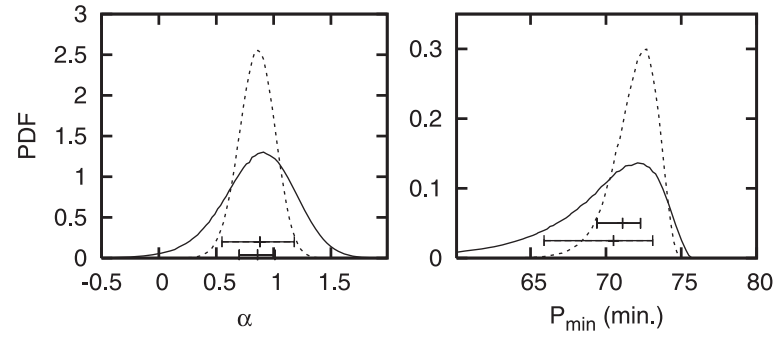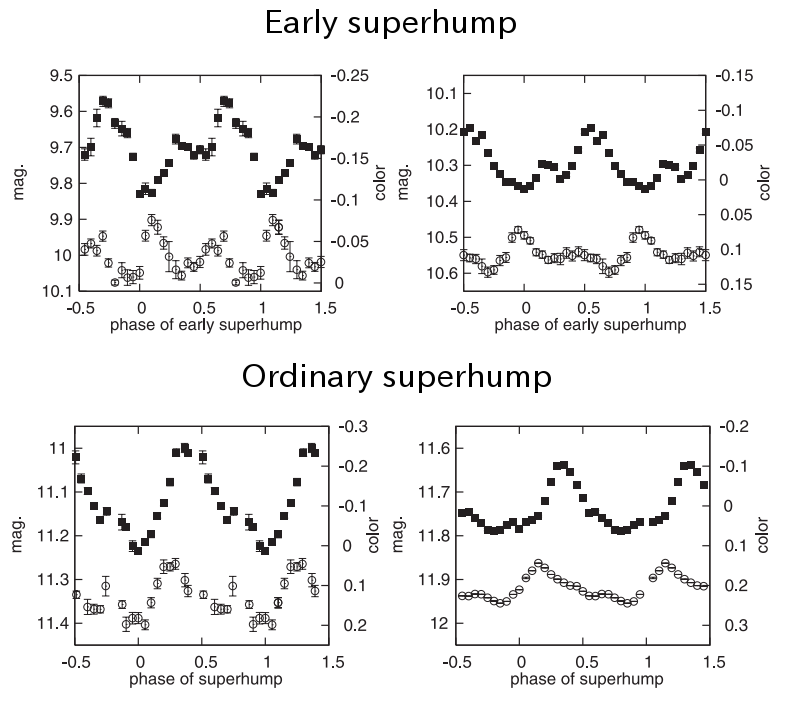Dwarf Novae in the Shortest Orbital Period Regime: II. WZ Sge Stars as the Missing Population near the Period Minimum

M. Uemura, T. Kato, D. Nogami, and T. Ohsugi, “Dwarf Novae in the Shortest Orbital Period Regime: II. WZ Sge Stars as the Missing Population near the Period Minimum,” PASJ, vol. 62, p. 613-, 2010.
WZ Sge-type dwarf novae are characterized by long recurrence times of outbursts (˜10 yr) and short orbital periods (lsim 85 min). A significant part of WZ Sge stars may remain undiscovered because of low outburst activity. Recently, the observed orbital period distribution of cataclysmic variables (CVs) has changed partly because outbursts of new WZ Sge stars have been discovered routinely. Hence, estimations of the intrinsic population of WZ Sge stars are important to study the population and the evolution of CVs. In this paper, we present a Bayesian approach to estimate the intrinsic period distribution of dwarf novae from observed samples. In this Bayesian model, we assumed a simple relationship between the recurrence time and the orbital period, which is consistent with observations of WZ Sge stars and other dwarf novae. As a result, the minimum orbital period was estimated to be ˜70 min. The population of WZ Sge stars exhibited a spike-like feature at the shortest period regime in the orbital period distribution. These features are consistent with the orbital period distribution previously predicted by population synthesis studies. We propose that WZ Sge stars and CVs with a low mass-transfer rate are excellent candidates for the missing population predicted by the evolution theory of CVs.




